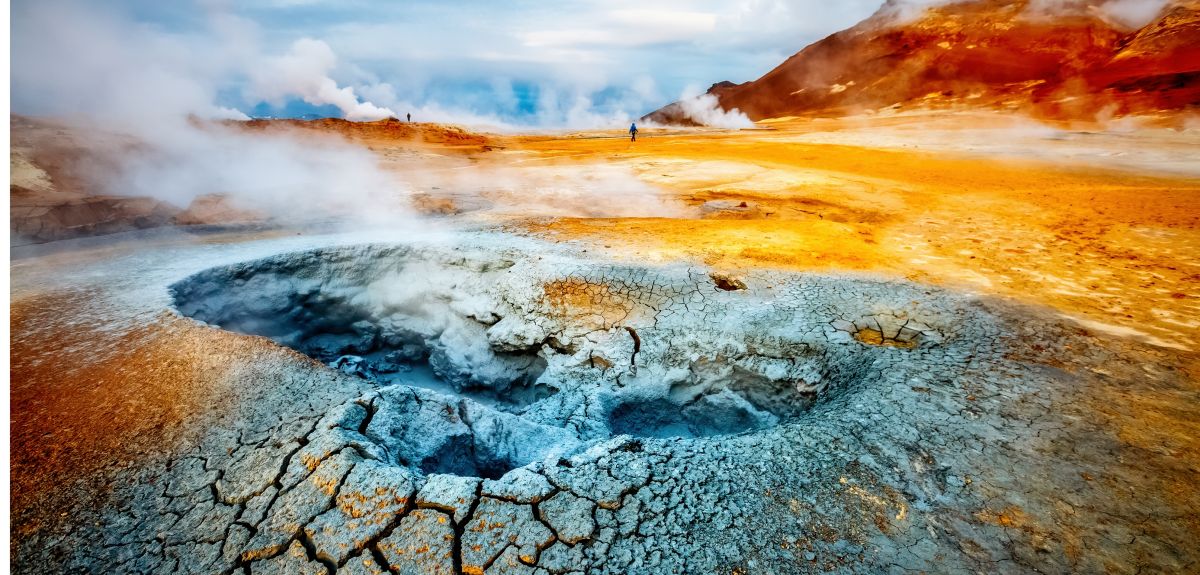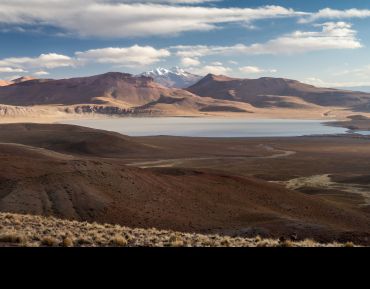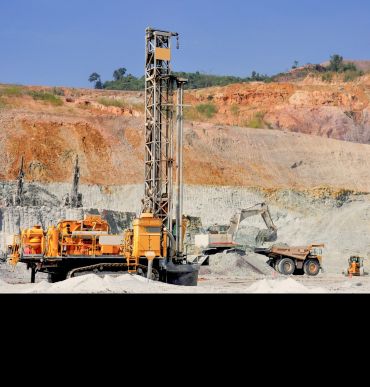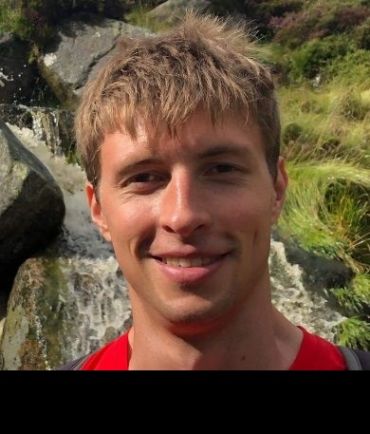
New method shows promise for locating deposits of critical metals
A new technique developed by University of Oxford researchers could help locate new deposits of critical metals needed to enable the green-energy transition. The findings have been published in Geophysical Research Letters.
 Lago Morejon with Volcano Uturuncu in the background at the altiplano in Bolivia. Image credit: Shutterstock.
Lago Morejon with Volcano Uturuncu in the background at the altiplano in Bolivia. Image credit: Shutterstock.A potentially rich source of these metals could be underground brines: highly concentrated salt solutions that can accumulate in the Earth’s crust. However, these brines can be challenging to locate as they typically accumulate kilometres under the surface. Accurately pinpointing the position of these deposits is important for reducing the risks and environmental impacts associated with drilling to extract these metal-rich brines.
In this new study, led by the University of Oxford’s Department of Earth Sciences, researchers developed a novel approach which proved capable of mapping both the location and composition of subsurface fluids. For the first time, this combined two different geological measurements: seismic attenuation tomography and seismic anisotropy.
Our study demonstrates that subsurface fluid accumulation and composition can be mapped seismically. Such observations at other locations could be used for a range of applications, from volcanic hazard assessment to the exploration of new metal-rich brine deposits required to resource the green-energy transition.
Dr Thomas Hudson, Department of Earth Sciences, University of Oxford.
Lead researcher Dr Thomas Hudson (Department of Earth Sciences, University of Oxford) explained: ‘Seismic attenuation measures the loss of energy of a seismic wave as it propagates through a medium. Seismic anisotropy, meanwhile, measures how the speed of seismic waves varies depending on the direction that the wave is travelling. Attenuation tomography images where fluids are (a little like a CT scan in a hospital) and whether the rock is partially saturated (contains gas) or fully saturated (no gas). Seismic anisotropy then tells us how the fluids travel and accumulate along faults.’
The researchers tested the combined approach on Uturuncu: a dormant volcano in the Bolivian Andes which last erupted 250,000 years ago. Dr Hudson said: ‘Uturuncu was an ideal system to test our approach to map liquids and gases because it sits atop the Altiplano-Puna Magma Body, the largest active magma body on Earth. This drives a source of hot, metal-rich fluids that ascend from deep beneath Uturuncu towards the surface. Uturuncu is at the edge of the Atacama desert, so the surrounding crust is particularly dry, enhancing images of any fluid-rich crust.’
 Accurately pinpointing the position of metal-rich deposits is important for reducing the risks and environmental impacts associated with drilling and mining. Image credit: Shutterstock.
Accurately pinpointing the position of metal-rich deposits is important for reducing the risks and environmental impacts associated with drilling and mining. Image credit: Shutterstock.Dr Hudson said: ‘In combination, these techniques produced a high-resolution map identifying what fluids can be found where in this system. In particular, we can identify with precision where brines - concentrated salt solutions- are and whether they contain carbon dioxide (i.e. are “sparkling”) or not (i.e. “still”). If carbon dioxide bubbles through them, then this tells us that the system is still active, and presumably still accumulating metals, whereas if the brines are still, then the system can be treated as stable, i.e. not still actively accumulating minerals.’
‘The results are exciting because these brines are rich in metals that are critical for the green energy transition. Our new method will hopefully provide foundations for derisking the mineral exploration process, which could lead to mining brines becoming commercially viable.’
 Dr Thomas Hudson. Image credit: University of Oxford.
Dr Thomas Hudson. Image credit: University of Oxford.‘It is the interdisciplinary nature of the subject of Earth Sciences that puts us in a unique position to find solutions to these Earth resource challenges’ added co-author Professor Jon Blundy (Department of Earth Sciences). ‘By applying and combining our understanding of geological, geochemical, geophysical, and biogeological systems we can find new resources and new ways of recovering them with minimal environmental cost.’
The paper ‘Hydrothermal fluids and where to find them: Using seismic attenuation and anisotropy to map fluids beneath Uturuncu volcano, Bolivia’ has been published in Geophysical Research Letters.
The study also involved researchers from the University of Bristol, Cornell University, USA, and Michigan State University, USA.
 International collaboration launches largest-ever therapeutics trial for patients hospitalised with dengue
International collaboration launches largest-ever therapeutics trial for patients hospitalised with dengue
 Oxford-built multi-agent assistant for cancer care to be piloted in collaboration with Microsoft
Oxford-built multi-agent assistant for cancer care to be piloted in collaboration with Microsoft
 World's first Phase II Nipah virus vaccine trial launch
World's first Phase II Nipah virus vaccine trial launch